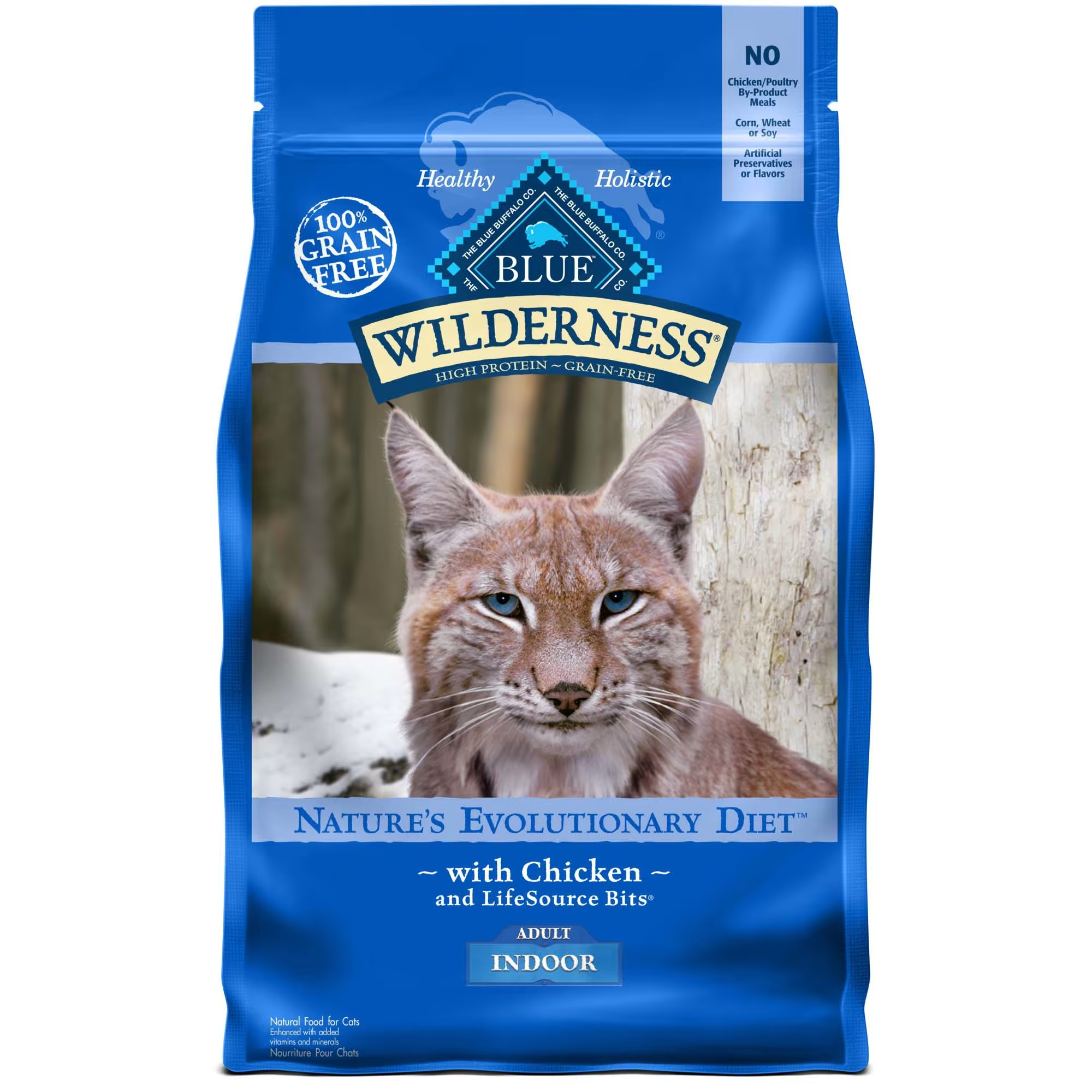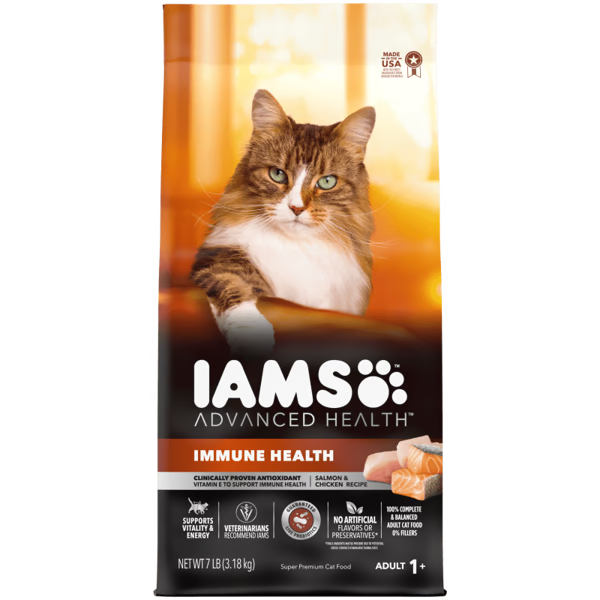Chicken is a popular protein source in many commercial cat foods. However, for some feline friends, chicken can trigger allergies or sensitivities. Additionally, some cat owners prefer to diversify their cat’s diet or avoid certain ingredients altogether. The good news is there’s a wide variety of delicious and nutritious dry cat food available that excludes chicken.

In This Article
Why Consider Chicken-Free Dry Cat Food?
There are several reasons why a cat owner might choose chicken-free dry cat food. Here are a few of the most common:
- Food Allergies or Sensitivities: Chicken is one of the most common food allergens in cats. Symptoms of a chicken allergy can include vomiting, diarrhea, itchy skin, and hair loss. If your cat exhibits these signs after eating chicken-based food, consulting a veterinarian to confirm an allergy and explore alternative protein sources is crucial.
- Dietary Variety: Cats are obligate carnivores, meaning their bodies require animal protein to thrive. However, that doesn’t mean they need to eat chicken exclusively. Including a variety of protein sources in your cat’s diet can ensure they receive a well-rounded spectrum of essential nutrients.
- Owner Preference: Some cat owners choose to avoid certain ingredients in their pet’s food, such as chicken, for ethical or environmental reasons.

Finding the Right Protein Alternative
Chicken-free dry cat food comes in a variety of protein options. Here’s a breakdown of some popular alternatives:
- Fish: Salmon, tuna, and ocean fish are excellent sources of protein and omega-3 fatty acids, which are beneficial for skin and coat health, as well as cognitive function. Be aware that some cats may also be allergic to fish-based foods.
- Duck: Duck is a delicious and easily digestible protein source that’s rich in iron and B vitamins. It’s also a novel protein, meaning it’s less likely to trigger allergies in cats with chicken sensitivities.
- Rabbit: Rabbit meat is a hypoallergenic protein option that’s packed with essential amino acids. It’s also a good source of glucosamine and chondroitin, which can support joint health in cats.
- Lamb: Lamb is a palatable and nutrient-rich protein source. It contains linoleic acid, an omega-6 fatty acid that contributes to a healthy skin and coat.
- Novel Proteins: Kangaroo, venison, and bison are becoming increasingly popular protein sources in cat food. These exotic meats are considered novel proteins, which means they’re less likely to cause allergic reactions in cats with sensitivities to more common proteins.

Choosing a High-Quality Chicken-Free Dry Cat Food
While there are many chicken-free dry cat food options available, not all are created equal. Here are some key factors to consider when choosing a food for your feline companion:
- AAFCO Compliance: Ensure the food meets the nutritional standards established by the Association of American Feed Control Officials (AAFCO) for your cat’s life stage (kitten, adult, or senior).
- First Ingredient: The first ingredient listed on the food label should be a high-quality protein source, such as whole meat or fish.
- Limited Ingredients: If your cat has allergies or sensitivities, look for a food with a limited ingredient list. This can help you pinpoint potential allergens more easily.
- Grain Content: Grains can be a source of carbohydrates in cat food, but some cats may have difficulty digesting them. Consider grain-free options or those with limited grains, such as brown rice or whole oats.
- Additional Nutrients: Look for a food that includes essential vitamins, minerals, and taurine, an amino acid that’s crucial for feline health.

Making the Switch to Chicken-Free Dry Cat Food
If you’re considering switching your cat to chicken-free dry food, it’s important to make the transition gradually. Here’s how to do it safely:
- Start Slowly: Begin by mixing a small amount of the new food with your cat’s current chicken-based food. Gradually increase the amount of new food over a period of 7-10 days.
- Monitor Your Cat: Pay close attention to your cat’s behavior and digestion during the transition. Signs of discomfort, such as vomiting or diarrhea, might indicate a sensitivity to the new food.
- Seek Veterinary Advice: If you have any concerns about switching your cat’s food, consult your veterinarian for guidance.
The Advantages of Feeding Cats Chicken-Free Dry Food
Chicken reigns supreme in many cat food bowls, but what if your feline friend needs a different kind of protein punch? Chicken-free dry cat food offers a surprising array of benefits, catering to cats with allergies, adventurous palates, and health-conscious owners. Let’s delve into the compelling reasons to consider this clucker-free option.
Catering to Sensitive Souls
For some cats, chicken triggers an unwelcome symphony of woes – itchy skin, upset tummies, and uncomfortable elimination issues. Chicken allergies are a common feline complaint, and chicken-free dry food offers a soothing solution. By eliminating the culprit, you can restore peace to your cat’s digestive system and alleviate allergy symptoms.
Diversifying the Dinner Plate
Cats are obligate carnivores, meaning meat is essential for their well-being. But that doesn’t mean they crave chicken exclusively! A variety of protein sources keeps mealtime exciting and ensures your cat receives a broader spectrum of vital nutrients. From the omega-3 bounty of salmon to the iron-rich goodness of duck, chicken-free options broaden your cat’s culinary horizons.
Ethical and Environmental Considerations
Some cat owners choose to avoid chicken for ethical or environmental reasons. Chicken-free dry food aligns with these values, offering alternative protein sources. Whether it’s the environmental impact of poultry farming or ethical concerns about animal welfare, chicken-free options cater to these preferences.
A World of Delicious Alternatives
The world of chicken-free cat food is anything but bland. From the easily digestible delights of duck to the hypoallergenic benefits of rabbit, there’s a protein source to tantalize even the pickiest feline palate. Novel proteins like kangaroo and venison add an exotic twist, while fish options like salmon and tuna provide a taste of the ocean.
Choosing the Right Chicken-Free Cuisine
Not all chicken-free dry food is created equal. Here’s what to look for:
- AAFCO Compliance: Ensure the food meets the nutritional standards set by the Association of American Feed Control Officials (AAFCO) for your cat’s life stage.
- Protein First: The first ingredient listed should be a high-quality protein source, like whole meat or fish.
- Limited Ingredients: If allergies are a concern, opt for a food with a short ingredient list for easier allergen identification.
- Grain Considerations: Grains can be a source of carbohydrates, but some cats struggle to digest them. Consider grain-free options or limited grains like brown rice.
- Nutrient Powerhouse: Look for essential vitamins, minerals, and taurine, an amino acid crucial for feline health.
Making the Switch Smoothly
Transitioning your cat to chicken-free food requires a gentle approach. Start by mixing a small amount of the new food with their current diet, gradually increasing the new food over a week. Monitor your cat for any signs of digestive discomfort. If you have any concerns, consult your veterinarian for personalized guidance.
A World Beyond Chicken
Chicken-free dry food opens a door to a world of delicious and nutritious possibilities. By catering to allergies, offering dietary variety, and aligning with ethical preferences, it provides a purr-fectly healthy and fulfilling alternative for your feline companion. So, ditch the clucking and explore the exciting world of chicken-free cat food – your cat’s happy tummy will thank you for it!

There are many delicious and nutritious dry cat food options available that don’t include chicken. By understanding your cat’s individual needs and considering the factors mentioned above, you can find a food that provides them with the complete and balanced nutrition they need to thrive. Remember, a happy and healthy cat is a purrfectly
